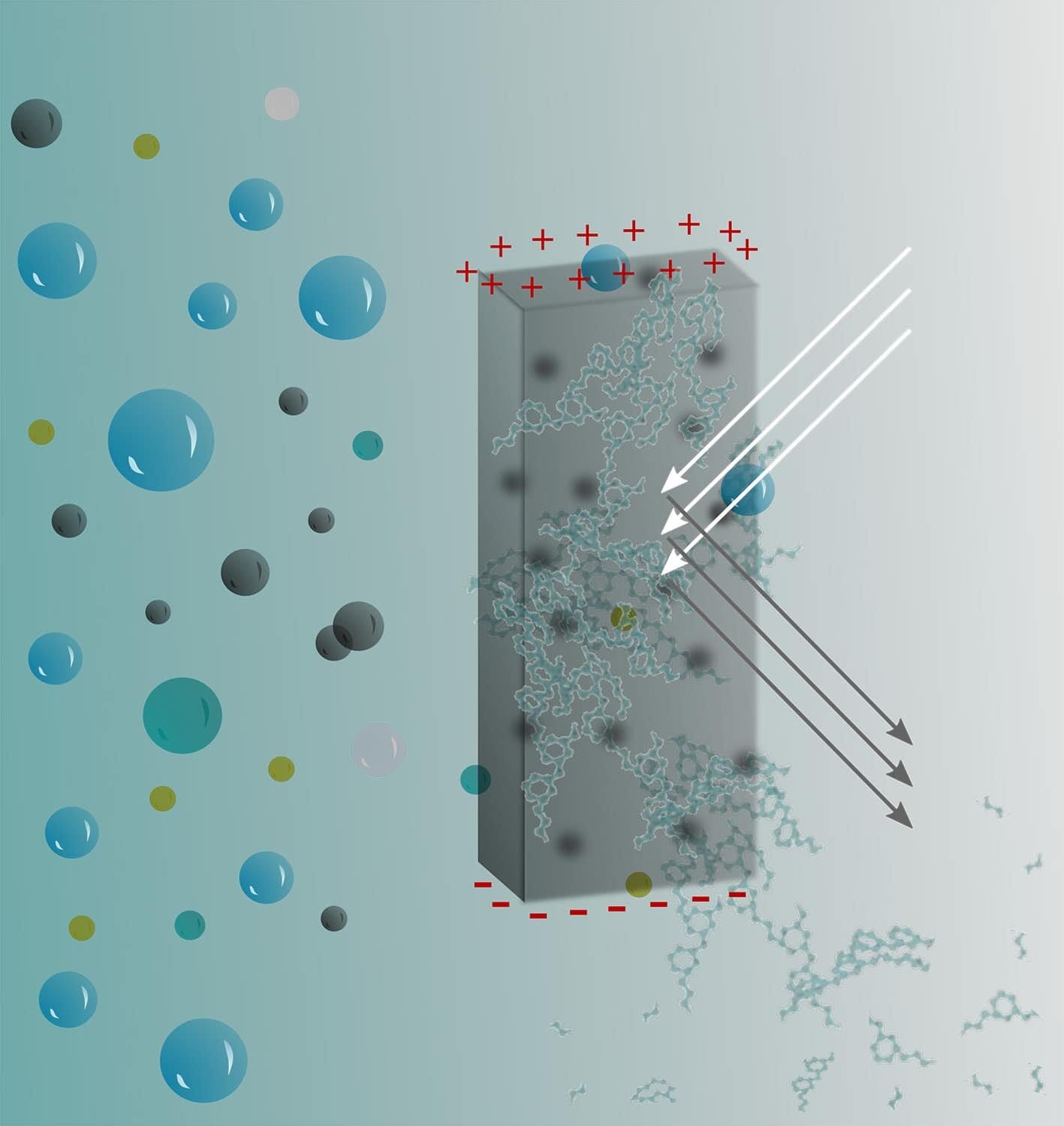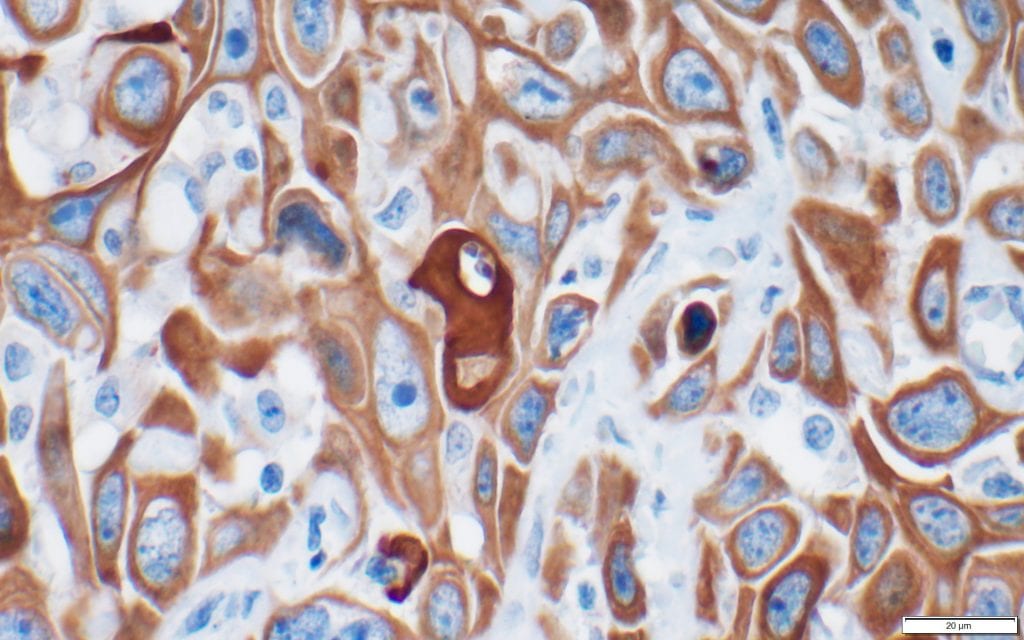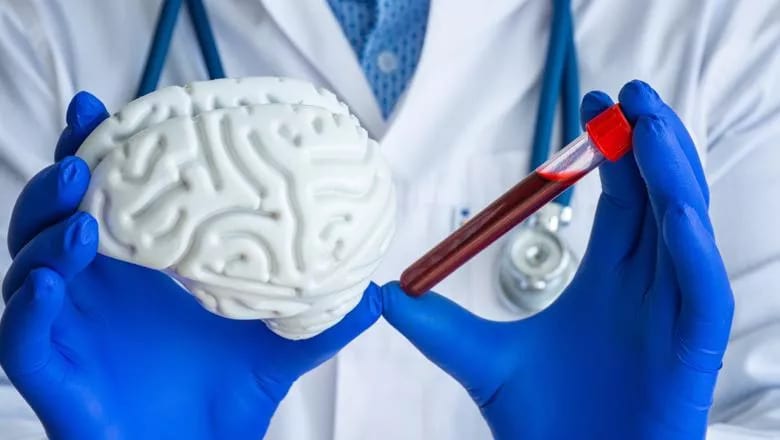
A graphic illustrates how bio-hydrogels respond to external stimuli and eventually can biodegrade in the environment.
NC State researchers are turning wood byproducts into sensory hydrogels that can react to different stimuli and, through advanced manufacturing methods, are made into sustainable, biodegradable smart materials that can be used in agriculture, health care and even veterinary medicine.
“The future is more sustainable, and nanotechnology, nanomaterials and biomaterials, those are part of that future,” said Lokendra Pal, an associate professor of forest biomaterials in the College of Natural Resources.
Hydrogels are porous, polymeric materials that are up to 90% water. Because they’re water-heavy, they’re permeable on a molecular level, which means they can be altered by chemical and mechanical modifications to change physically and chemically when met with certain stimuli, like temperature, pressure and moisture. These changes can be monitored by electrical or mechanical transducers or simply by sight.
Researchers in the Department of Forest Biomaterials have turned carboxymethylcellulose and cellulose nanomaterials, which are abundantly available from trees and agriculture residues, into biodegradable hydrogels by using advanced manufacturing. The innovation is a sustainable solution to an array of big problems. Take, for example, food insecurity, which is influenced by pests, plant disease and climate change.
“We’re looking at green agriculture,” Pal said. “Some plants respond to different wavelengths of light, so the material can be used in greenhouses or other amenable places. Wavelengths can be directed so the plants can grow faster. Agriculture, especially in the most populated regions of the world, will suffer from undue stresses on the plants induced by climate change. These materials can provide a microenvironment to deal with it.”
And as the world’s population ages, there is an increasing need for assisted care, diagnostic tools and sensory devices. The material can even be used in contact lenses, meeting eyes’ friction, oxygen and comfort requirements.
“We can tune the materials’ properties, like oxygen transmission rate, and they can be customized for people’s needs and manufactured on demand using a 3D printer,” Pal said. “There’s no one-size-fits-all.”
The hydrogels are so customizable that Pal and his colleagues are exploring creating a similar lens for animals. While participating in the National Science Foundation’s Innovation Corps program, they realized animals recovering from eye injuries or surgeries could benefit from a sensory gel-type bandage.
“Humans can tell you whether they’re having issues with their eyes,” Pal said. “Because these hydrogels have a sensing mechanism, a trigger can cause it to change color or have another reaction. Animals can’t talk to you, but with these, you can see what’s going on.”
The goal now is to collaborate with NC State’s College of Veterinary Medicine for further research and testing. While that process is ongoing, it could be a year until the team brings sensory hydrogels for agriculture to the market, studying crop protection and organic farming. That process, too, is highly collaborative, just as the College of Natural Resources is.
“If you look at our college, one of our biggest strengths is our different departments,” Pal said. “Forestry can genetically and biotechnologically design and plant seeds for faster growing and disease -free trees and forests. Our department takes those and works through more green chemical processing and advanced manufacturing to transform them into various bioproducts, biochemicals and bioenergy. Parks, Recreation and Tourism Management looks at all of the human aspects. Together we can start to grow trees through sustainable forest management and create future bio-based materials that benefit society as well as the environment as a whole
Original Article: Turning Tree Residue into Smart Hydrogels
More from: North Carolina State University
The Latest Updates from Bing News & Google News
Go deeper with Bing News on:
Sensory hydrogels
- Fredericton occupational therapists open first sensory room for children, youth
“There was just an accumulating waitlist for children who needed sensory assessments because of, you know, different diagnoses or sensory processing challenges that can be related to mental ...
- Dialing down the noise: A sensory-friendly atmosphere at festival
If you know someone who has sensory issues, a sensory safe zone during the festival could be beneficial. Zone Detene is a sensory-friendly tent set up by The Beluga Project and Festival International.
- Overwhelmed by the Grand Prix of Long Beach? City’s new sensory trailer is here to help
So at some point, Ryan’s son needed a break. And they found the perfect place: a new sensory trailer in the lifestyle expo. “We’ve been here since 10:30 a.m. so I think he just got a bit ...
- Lightning celebrate neurodiversity with new sensory room
That's why the Bolts set up a sensory room inside Amalie Arena. It's a relaxed environment for fans who might need to take a break from the excitement. "We want to make sure we have something for ...
- Parents loving £15 stretchy sensory body sock that 'works wonders' for kids with additional needs
Parents have been loving a product being sold on Amazon that they say has been helping their children with additional and sensory needs. Many mums and dads have been so impressed that the item ...
Go deeper with Google Headlines on:
Sensory hydrogels
[google_news title=”” keyword=”sensory hydrogels” num_posts=”5″ blurb_length=”0″ show_thumb=”left”]
Go deeper with Bing News on:
Smart hydrogels
- Experian Smart Money Review 2024
See how we rate banking products to write unbiased product reviews. Experian Smart Money Overview Experian Smart Money is an overall solid checking account option. There is a $0 minimum opening ...
- Best smart garage door opener controllers
Long before anyone thought of living in a smart home, someone figured out how to automate the opening and closing of a garage door, so they didn’t need to get out of their car and into the ...
- SMART Response XE
The SMART Response XE is a handheld computer that was originally sold for use in the classroom as a terminal for pupils taking tests. It’s now cheap enough on the surplus market to have become a ...
- Best Smart Displays of 2024
Expertise Smart home devices, outdoors gadgets, smartphones, wearables, kid's tech, and some dabbling in 3D printing Credentials Covered the mobile and smart home tech space for the past five ...
- Smart Insulating Material Developed for Real-Time Detection of Thermal Runaway in Batteries
Professor Im Sang-hyuk’s group of the Department of Chemical and Biological Engineering developed a porous thermoelectric material featuring excellent insulation performance combined with energy ...
Go deeper with Google Headlines on:
Smart hydrogels
[google_news title=”” keyword=”smart hydrogels” num_posts=”5″ blurb_length=”0″ show_thumb=”left”]









